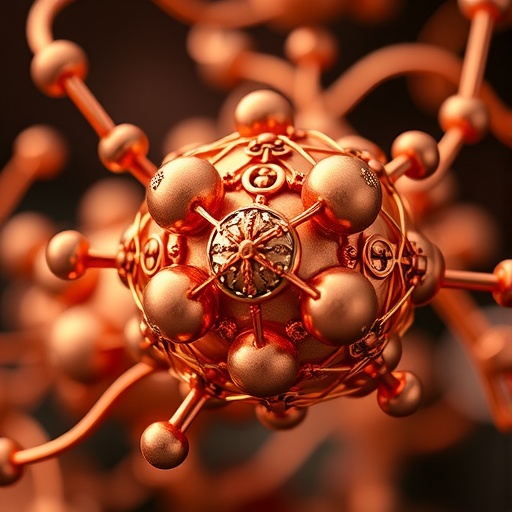New Orleans, LA – Research conducted by LSU Health New Orleans School of Public Health finds that the current recommendations for running water to flush out lead are not consistently effective and may not be the best way to protect children from lead in drinking water. The findings are published in the International Journal of Environmental Research and Public Health available online at http://www.mdpi.com/1660-4601/15/7/1537/htm.
"While flushing taps according to prevailing guidelines (for 30 seconds to 2 minutes) may reduce water lead levels for some homes, over half the tested homes had peak water lead levels after that time, so these recommendations may inadvertently increase exposures," notes study leader Adrienne Katner, DEnv, Assistant Research Professor of Environmental & Occupational Health Sciences at LSU Health New Orleans School of Public Health. "More effective interventions like certified water filters should be considered instead, particularly when replacing water service lines and plumbing is not economically possible."
The research team surveyed homeowners and tested water samples from 376 New Orleans homes on the East Bank of the Mississippi River (the city's water source) between February 2015 and November 2016. Recruited homes met criteria for the potential presence of lead. Virginia Tech colleagues analyzed the water samples, which were first cold water draws, first hot water draws, draws after letting the water run for 30 – 45 seconds, 2.5 – 3 minutes or 5.5 – 6 minutes.
Overall, New Orleans water lead levels were typically low compared to the EPA's action level of 15 ppb. The analysis revealed a water lead level of 5 ppb in 88% of all samples from normal-use residential sites. More than half of all samples from normal use sites (60%) had detectable water lead levels of at least 1 ppb or higher. Water lead levels ranged from non-detectable (less than 1 ppb) to 58 ppb found in samples after flushing for 30-45 seconds. There was no significant difference in water lead level distribution after flushing for the various amounts of time until the six-minute mark after which the water lead level distribution decreased.
"While the percent of samples with water lead levels exceeding 1 ppb did decrease after extended flushing for 5.5 to 6 min, the reductions were not always substantial," says Dr. Katner. "If the aim is to prevent childhood lead exposure altogether, preferably, or at least reduce it to the minimally detectable level (1 ppb) as recommended by the American Academy of Pediatricians, then New Orleans may require more proactive interventions than flushing to meet this goal. We could not verify that a one-time flush is sufficient to maintain low water lead levels. Some studies evaluating flushing at school taps suggest frequent flushes may be needed throughout the day, as waterborne lead can return to pre-flush levels within hours. Prolonged and repeated flushing may also not be practical, cost-effective, or sustainable over the long term, especially in cities with declining water resources and/or rising water rates."
Katner and her colleagues conclude, "Public health messages should be modified to ensure appropriate application of flushing, while acknowledging its short-comings and practical limitations."
###
In addition to Katner, the LSU Health New Orleans research team included Drs. Hui-Yi Lin, Chih-Yang Hu, as well as Komal Brown and Xinnan Wang. Researchers from Virginia Tech, Tulane University, and Corona Environmental Consulting also participated.
The research was supported in part by the Louisiana Board of Regents' New Research Pilot Funding Program, the National Science Foundation, LSU Health New Orleans School of Public Health and the National Institutes of Health.
Resources:
Information about NSF International-certified water filters is available at http://www.nsf.org/newsroom/lead-in-drinking-water-nsf-certified-filters.
Healthy Babies, Bright Futures offers low-cost water testing. Information is available at https://hbbf.org/lead-drinking-water.
LSU Health Sciences Center New Orleans educates Louisiana's health care professionals. The state's flagship health sciences university, LSU Health New Orleans includes a School of Medicine, the state's only School of Dentistry, Louisiana's only public School of Public Health, and Schools of Allied Health Professions, Nursing, and Graduate Studies. LSU Health New Orleans faculty take care of patients in public and private hospitals and clinics throughout the region. In the vanguard of biosciences research in a number of areas in a worldwide arena, the LSU Health New Orleans research enterprise generates jobs and enormous economic impact. LSU Health New Orleans faculty have made lifesaving discoveries and continue to work to prevent, advance treatment, or cure disease. To learn more, visit http://www.lsuhsc.edu, http://www.twitter.com/LSUHealthNO, or http://www.facebook.com/LSUHSC.
Media Contact
Leslie Capo
[email protected]
504-568-4806
@LSUHealthNO
http://www.lsuhsc.edu/
http://lsuh.sc/nr?a=276
Related Journal Article
http://dx.doi.org/10.3390/ijerph15071537



